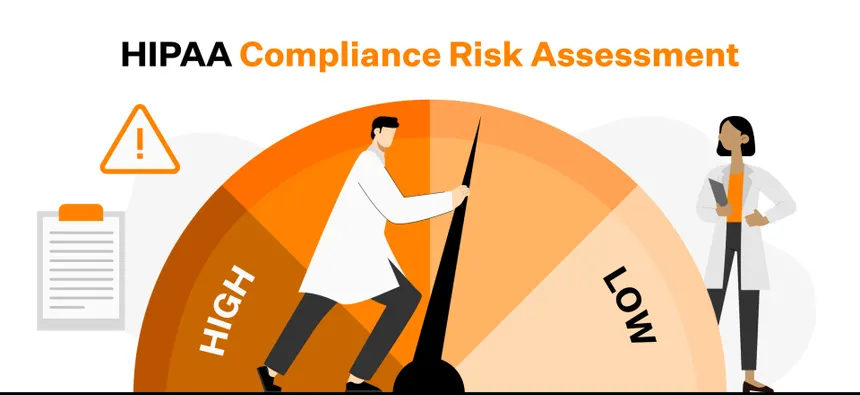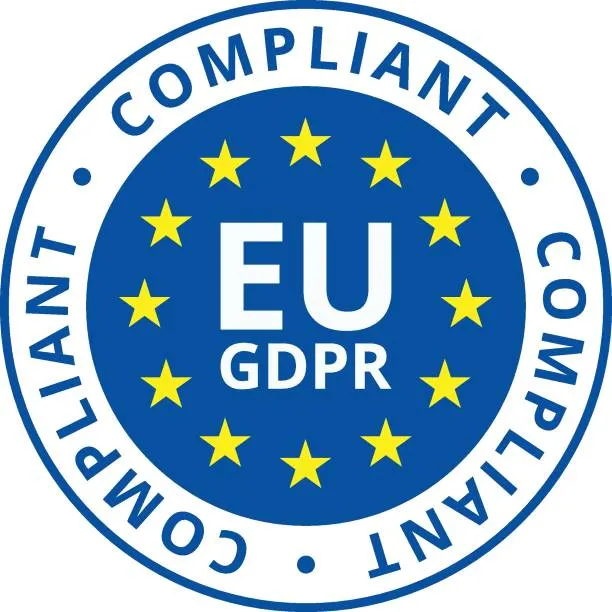6 February, 2025
In today’s digital age, safeguarding patient information is more critical than ever, making HIPAA compliance a top priority for healthcare organizations. The Health Insurance Portability and Accountability Act (HIPAA) establishes essential guidelines to protect the privacy and security of Protected Health Information (PHI). To ensure compliance, healthcare facilities must implement a comprehensive approach that includes understanding applicable HIPAA rules, appointing dedicated Privacy and Security Officers, conducting regular risk assessments, and providing thorough employee training. This blog outlines practical administrative steps that organizations can take to evaluate and enhance their HIPAA compliance efforts.
1. Determine Which HIPAA Rules Apply To Your Organization
The first step is to determine whether your organization is a covered entity or a business associate. Most healthcare facilities fall under covered entities, as they store, process or come in contact with Protected Health Information (PHI). When a covered entity outsources functions, activities, or services to a third party that is not a member of the covered entity’s workforce or is not a party excluded by the Administrative Simplification Regulations, and the outsourced function involves a disclosure of PHI, the third party is known as a business associate. Next, identify where PHI is created, received, stored or transmitted within your organization in order to clarify which HIPAA rules are applicable to your institution.
Source: 7 Types of Updated HIPAA Rules
Which HIPAA Rule Applies To My Organization?
- The HIPAA Privacy Rule: This rule governs how PHI can be used and shared, requiring covered entities to implement safeguards to protect patient information and grant individuals rights over their information. Hospitals, for example, can only use or disclose PHI for treatment, payment, or healthcare operations unless the patient provides additional consent. Additionally, hospitals are required to provide a Notice of Privacy Practices explaining how their information is used and protected.
- The HIPAA Security Rule: Focuses on protecting electronic PHI (ePHI) against unauthorized access through administrative, physical, and technical safeguards. These safeguards should be overseen by a designated Security Officer responsible for implementing security measures and conducting risk assessments.
- The HIPAA Breach Notification Rule: Mandates that covered entities notify affected individuals in the event of a data breach involving unsecured PHI. Notifications must be made without unreasonable delay and no later than 60 days after discovery of the breach. In case of breaches affecting 500 or more individuals, covered entities must also report the incident to the Department of Health and Human Services (HHS) within the same 60 day timeframe. The Office for Civil Rights (OCR) data breach portal shows 721 reports of large data breaches in 2024, down 3.48% from 2023’s record-breaking total of 747.

Source: The HIPAA Journal, December 2024 Healthcare Data Breach Report
- The HIPAA Transactions and Code Sets Rule: This rule impacts covered entities by requiring them to use standardized formats for electronic claims submissions to ensure efficient processing and reimbursement.
- The HIPAA Enforcement Rule: Addresses penalties for HIPAA violations and outlines the procedures for investigations by the OCR. To maintain HIPAA compliance, entities must take proactive steps by establishing robust compliance programs and addressing violations promptly.
- The HIPAA Identifiers Rule: Specifies 18 identifiers that must be removed for health information so that it cannot be used to identify an individual (pseudonimization).
- The Omnibus Rule: Extends HIPAA requirements to business associates and requires them to comply with the same security safeguards as covered entities. Enhancing accountability across all parties involved in the handling of PHI.
2. Roles and Responsibilities in HIPAA Compliance
Having a designated Privacy Officer responsible for HIPAA compliance regarding the Privacy and Breach Notification rules and a separate Security Officer for compliance with the HIPAA Security Rule ensures a comprehensive and coordinated approach to risk assessment. Below we have created a table with possible day-to-day, monthly and quarterly tasks to help differentiate the responsibilities of each officer.
| TASKS | PRIVACY OFFICER | SECURITY OFFICER |
| DAY-TO-DAY |
|
|
| MONTHLY |
|
|
| QUARTERLY |
|
|
3. Conduct Regular Risk Assessment
Performing regular internal audits is vital for assessing risks associated with PHI management. These evaluations help organizations uncover vulnerabilities that could lead to data breaches. Enhancing HIPAA compliance through thorough audits ensures better protection of sensitive information. Ultimately, this diligence safeguards ePHI and strengthens patient trust in the healthcare system.
How to conduct HIPPA Compliance Risk Assessment?
- Establish an audit team including the Privacy and Security Officers, members of the IT department and PHI users of the organization.
- Map out the PHI flow within the organization, identifying where the data is created, stored and transmitted. Identify potential threats, risks and vulnerabilities in systems, applications, and processes.
- Rank risks based on probability of occurrence and potential impact.
- Review existing privacy and security policies to ensure they align with HIPAA requirements. Verify that these policies cover all aspects of PHI handling, including access control, data transmission, storage and deletion.
- Assess technical and physical safeguards such as firewalls, encryption and access controls. Conduct vulnerability scans and penetration tests to identify weaknesses in the IT infrastructure. Examine physical safeguards to areas where PHI is stored or accessed.
- Evaluate administrative safeguards by reviewing employee training programs and verifying that all staff members that handle PHI have completed HIPAA training. Run breach simulations to assess the effectiveness of breach reporting and incident response plans.
- Audit business associate agreements with third-party vendors to ensure they meet HIPAA requirements. Verify that business associates have appropriate safeguards in place.
- Document findings for comparison with future reports. Record all observations, vulnerabilities and non-compliant areas identified during the audit.
- Develop a detailed action plan to address identified vulnerabilities and HIPAA compliance gaps. Include deadlines and assigned responsibilities for each corrective measure.
- Conduct a follow-up assessment to verify that the compliance team has effectively implemented the corrective actions.
Source: HIPAA Compliance Checklist
4. Enhance Compliance Through Employee Training
Ensure all workforce members, including volunteers and trainees, receive HIPAA compliance training on policies. Tailored training programs should address specific roles and responsibilities within the organization. This proactive approach ensures consistent adherence to HIPAA compliance across all levels of staff. Ideally, trainings should include:
- Overview of HIPAA, including its purpose, and importance, its key components and an explanation of the PHI
- Clear definition and examples of what is PHI and what is not.
- Detailed explanations of Privacy Rule, including patient rights to access their health information and their right to request amendments.
- Best practices for maintaining data security and preventing unauthorized access
- Simulation exercise of breach reporting.
- Discussion of HIPAA enforcement mechanisms including penalties for non-compliance.
5. Conduct HIPAA Compliance Testing
Through the use of specialized software testing services, healthcare institutions can ensure that all healthcare applications and systems maintain HIPAA compliance. Tools like SAMMY provide a structured framework for organizations to conduct a baseline assessment of their current security practices. This initial self-assessment helps identify existing gaps in HIPAA compliance. Likewise, it can also be used to conduct threat modeling during risk assessments and to establish clear goals for improving security measures related to patient data protection.





